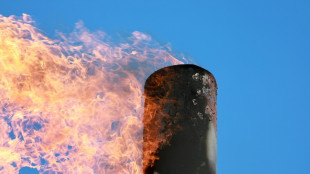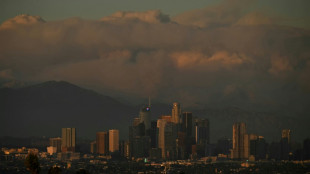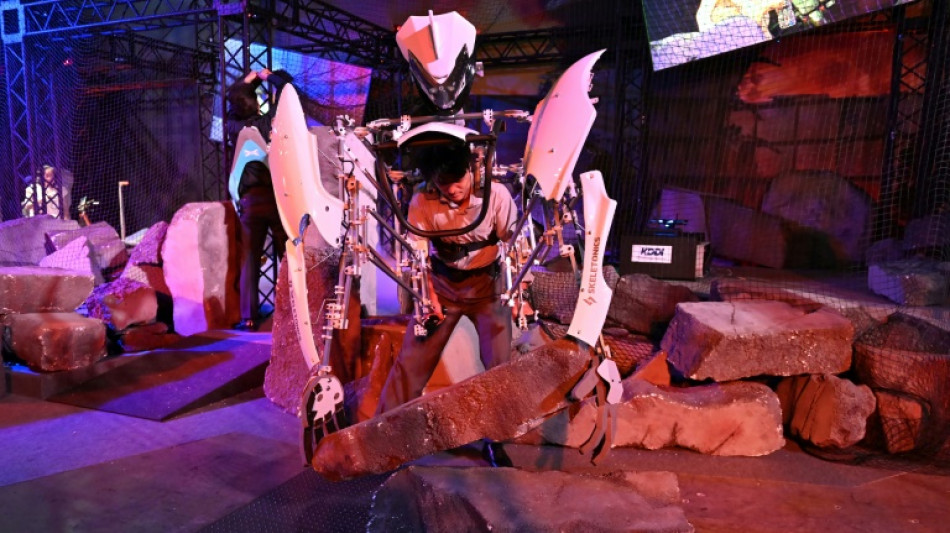
-
 Putin evokes WWII victory to rally Russia behind Ukraine offensive
Putin evokes WWII victory to rally Russia behind Ukraine offensive
-
China exports beat forecasts ahead of US tariff talks
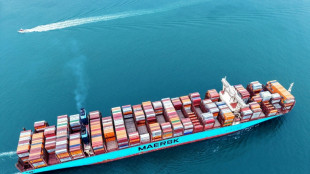
-
 Leo XIV, the 'Latin Yankee', to celebrate first mass as pope
Leo XIV, the 'Latin Yankee', to celebrate first mass as pope
-
Most stocks lifted by hopes for US-China talks after UK deal

-
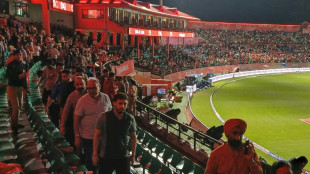 IPL suspended indefinitely over India-Pakistan conflict: reports
IPL suspended indefinitely over India-Pakistan conflict: reports
-
German lender Commerzbank's profits jump as it fends off UniCredit
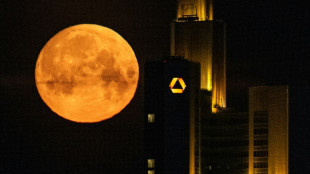
-
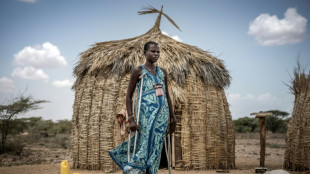 Rare bone-eroding disease ruining lives in Kenya's poorest county
Rare bone-eroding disease ruining lives in Kenya's poorest county
-
India says repulsed fresh Pakistan attacks as de-escalation efforts grow
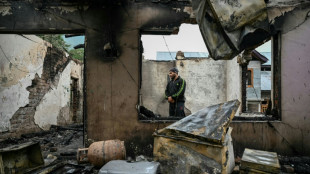
-
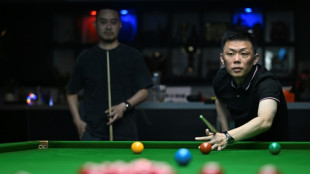 Zhao's historic snooker title sparks talk of China world domination
Zhao's historic snooker title sparks talk of China world domination
-
'High expectations': EU looks to Merz for boost in tough times

-
 Poisoned guests rarely invited before deadly mushroom lunch, Australia trial hears
Poisoned guests rarely invited before deadly mushroom lunch, Australia trial hears
-
China sales to US slump even as exports beat forecasts
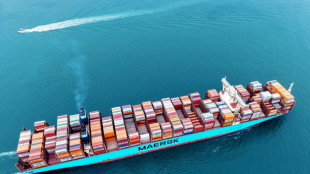
-
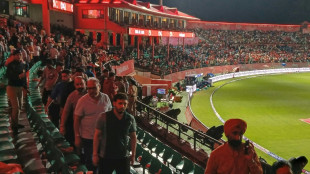 Indian cricket to make 'final decision' on IPL over Pakistan conflict
Indian cricket to make 'final decision' on IPL over Pakistan conflict
-
Dethroned Bundesliga champions Leverkusen face uncertain future

-
 China can play hardball at looming trade talks with US: analysts
China can play hardball at looming trade talks with US: analysts
-
French monuments in trouble while PSG prepare for Champions League final

-
 Newcastle face Chelsea in top five showdown, Alexander-Arnold in spotlight
Newcastle face Chelsea in top five showdown, Alexander-Arnold in spotlight
-
Flick's Barca must show 'hunger' in crunch Liga Clasico

-
 Clasico the last chance saloon for Ancelotti's Real Madrid
Clasico the last chance saloon for Ancelotti's Real Madrid
-
Timberwolves overpower Warriors to level series

-
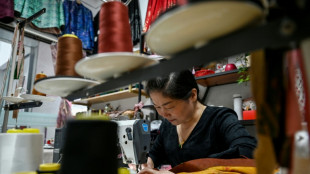 Chinese fabric exporters anxious for US trade patch-up
Chinese fabric exporters anxious for US trade patch-up
-
Putin gears up to host world leaders at lavish army parade

-
 Nearing 100, Malaysian ex-PM Mahathir blasts 'old world' Trump
Nearing 100, Malaysian ex-PM Mahathir blasts 'old world' Trump
-
Leo XIV, first US pope, to celebrate first mass as pontiff

-
 Asian stocks lifted by hopes for US-China talks after UK deal
Asian stocks lifted by hopes for US-China talks after UK deal
-
Former head of crypto platform Celsius sentenced 12 years

-
 Ex-model testifies in NY court that Weinstein assaulted her at 16
Ex-model testifies in NY court that Weinstein assaulted her at 16
-
Nestlé and OMP Showcase Approach to Future-Ready Supply Chain at Gartner Supply Chain Symposium/Xpo in Barcelona

-
 Genflow Biosciences PLC Announces Share Subscription, Director's Dealing and Update
Genflow Biosciences PLC Announces Share Subscription, Director's Dealing and Update
-
Argo Blockchain PLC Announces 2024 Annual Results and Restoration of Listing

-
 'Great honor': world leaders welcome first US pope
'Great honor': world leaders welcome first US pope
-
Pacquiao to un-retire and fight Barrios for welterweight title: report

-
 Trump unveils UK trade deal, first since tariff blitz
Trump unveils UK trade deal, first since tariff blitz
-
Man Utd one step away from Europa League glory despite horror season

-
 Jeeno shines on greens to grab LPGA lead at Liberty National
Jeeno shines on greens to grab LPGA lead at Liberty National
-
Mitchell fires PGA career-low 61 to grab Truist lead

-
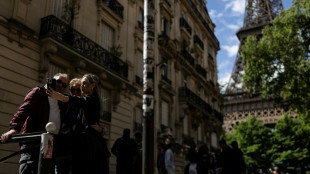 AI tool uses selfies to predict biological age and cancer survival
AI tool uses selfies to predict biological age and cancer survival
-
Extremely online new pope unafraid to talk politics

-
 Postecoglou hits back as Spurs reach Europa League final
Postecoglou hits back as Spurs reach Europa League final
-
Chelsea ease into Conference League final against Betis

-
 Pope Leo XIV: Soft-spoken American spent decades amid poor in Peru
Pope Leo XIV: Soft-spoken American spent decades amid poor in Peru
-
First US pope shared articles critical of Trump, Vance

-
 'Inexcusable' - NBA champs Boston in trouble after letting big leads slip
'Inexcusable' - NBA champs Boston in trouble after letting big leads slip
-
US automakers blast Trump's UK trade deal

-
 Stocks mostly rise as US-UK unveil trade deal
Stocks mostly rise as US-UK unveil trade deal
-
Trump presses Russia for unconditional 30-day Ukraine ceasefire

-
 Anything but Europa League glory 'means nothing' for Man Utd: Amorim
Anything but Europa League glory 'means nothing' for Man Utd: Amorim
-
'Inexcuseable' - NBA champs Boston in trouble after letting big leads slip

-
 Pope Leo 'fell in love with Peru'and ceviche: Peru bishop
Pope Leo 'fell in love with Peru'and ceviche: Peru bishop
-
Pakistan's T20 cricket league moved to UAE over India conflict


Japan show provides glimpse of robots as future of rescue efforts
With a drone camera, a survivor is spotted in the rubble. A robot on tracks brings him water while rescuers in exoskeletons clear an escape route for an autonomous stretcher to take her to safety.
This is the futuristic vision on display at the Japan Mobility Show, aiming to exhibit how technology can help and sometimes replace humans in a country short of workers and no stranger to disasters.
But so as not to alarm people, the imaginary tragedy is unleashed by Godzilla, who has unleashed catastrophe in Japanese disaster films since the 1950s.
In Japan nearly 30 percent of the country's population is aged 65 and over.
"Because of the decline of the population there are fewer and fewer people available for dangerous tasks," said Tomoyuki Izu, founder of Attraclab, a local start-up specialising in autonomous mobility.
"My idea is to help people such as firefighters with my machines," Izu, 61, told AFP.
It was Attraclab that co-developed the small delivery robot squeezing through the cardboard rubble at the Japan Mobility Show and designed the remote-control stretcher on wheels or tracks.
For now the Japanese government favours "traditional equipment" for relief efforts, he said at the event, which opens to the public this weekend.
But Izu believes there will be a market for more advanced technology in the future.
"There's a lots of anime with humanoid robots in Japan, and therefore people love them. But these kinds of autonomous vehicles are still very strange for them," he said.
Since 2016, Japan's Kawasaki Heavy Industries (KHI) has been developing Kaleido, a robust humanoid robot capable of delicately lifting and moving injured people.
- 'Shortage of labour' -
"In the future this robot will be able to save people, or go to dangerous zones, like fires," said Itsuki Goda from the robotics division of KHI.
He conceded, though, that the machine needs more development on its scanning capabilities to get through difficult terrain.
"We need more years of development if we want to use it in real situations, where conditions are always different," he told AFP.
Kaleido's current load capacity of 60 kilograms (132 pounds) will be increased very soon with a new prototype, promised Goda.
Price is also an issue.
Right now this robot is "maybe 10 times more expensive than a human, but if we produce 10,000 of them per year, the price will go down rapidly", Goda added.
Since the Fukushima nuclear disaster in 2011, another niche segment has exploded: robots to clear up disaster areas that are difficult or dangerous to access.
Engineering firm Sugino Machine presented a powerful but small robotic arm rigged on crawlers that can work in areas that emergency workers cannot go.
The machine was built in 2018 for a nationally run atomic research agency, as Japan continues the work to decommission the Fukushima Daiichi nuclear plant.
"This can be used for initial damage assessment or to remove debris or to remove heavy items that people cannot lift," Akira Inujima from Sugino Machine told AFP.
Various tools can be attached to its arm, such as image, temperature or radioactivity sensors, or a high-pressure water lance.
"We have a shortage of labour. It is difficult to go all robot. But we can offer solutions to help people's work," he said.
"After Fukushima, we have been able to continue technological development because there has been project after project (heavily supported by the government), like removing debris, that needs our work," Inujima said.
"It's important to continue this work and not make this fade away."
C.Garcia--AMWN
